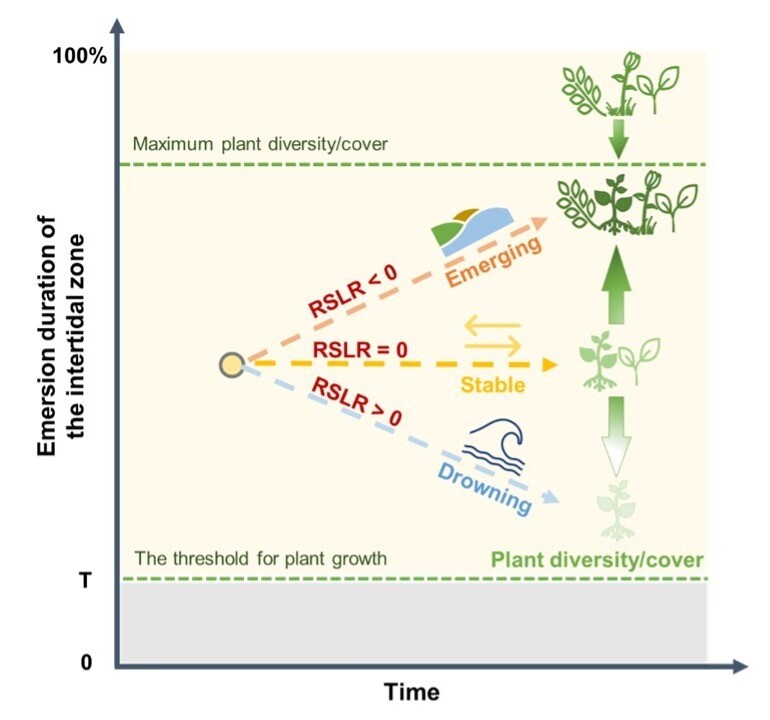J. Feng1,2*, T. J. Grandjean1 , J. van de Koppel1,3, D. van der Wal1,2
1 NIOZ Royal Netherlands Institute for Sea Research, Dept Estuarine and Delta Systems, P.O. Box 140, 4400 AC Yerseke, the Netherlands; 2 Faculty of Geo-Information Science and Earth Observation (ITC), University of Twente, P.O. Box 217, 7500 AE Enschede, the Netherlands; 3 Groningen Institute for Evolutionary Life Sciences, University of Groningen, P.O. Box 11103, 9700 CC Groningen, the Netherlands
* Corresponding author: jing.feng@nioz.nl
Introduction
Saltmarsh ecosystems are dynamic landscapes where geomorphic change and climate variability converge to shape vegetation patterns and ecosystem functions. This study integrates two complementary investigations in the Western Scheldt estuary, Netherlands, to unravel how these dual forces interact to drive long-term ecological changes.
Objective and Methods
Firstly, we explored the bio-geomorphic interplay between tidal emergence and vegetation dynamics through pixel-based geospatial analysis by using emersion duration maps and vegetation maps of the Dutch Western Scheldt estuary over a period of decades (1993-2016) (Feng et al., 2025).
Secondly, we investigated long-term vegetation phenology from 1993 to 2022, using Landsat satellite-derived 2-band enhanced vegetation index (EVI2) and climate data, coupled to existing sequential maps of vegetation communities.
Results
We uncovered how elevation and emersion duration influence plant diversity and species distribution. Higher intertidal areas, experiencing increased elevation and emersion duration have greater plant diversity and cover, while lower intertidal zones show declines in elevation and emersion duration. Responses were species-specific: pioneer species like Spartina spec. and Salicornia spec. dominate lower elevations, whereas high marsh species such as P. australis thrive in elevated areas. These findings highlight the tight links between geomorphic processes and vegetation dynamics and underscore the need to integrate localized relative sea level changes into ecosystem management.
We also identified phenological shifts, including earlier green-up, accelerated peak growth, and extended growing seasons, driven by seasonal climate variability. Higher intertidal areas exhibit earlier growth onset than lower intertidal areas. In addition, there was phenological asynchrony—pioneer species green up earlier than high marsh species. Seasonal climate variables, such as spring warming and winter precipitation, (cor)relate with these phenology patterns, with warmer springs advancing growth onset and higher winter precipitation extending the growing season.
By decoding the dual forces of geomorphic shifts and climate variability, this research provides a novel framework for understanding and predicting saltmarsh ecosystem responses to environmental change.

Conceptual diagram of main drivers to change the emergence of the local area of the intertidal zone and its ecological consequences (Feng et al., 2025).
References
Feng, J., Grandjean, T. J., Van De Koppel, J., and Van Der Wal, D. (2025). A spatiotemporal framework to assess the bio-geomorphic interplay of saltmarsh vegetation and tidal emergence (Western Scheldt estuary). International Journal of Applied Earth Observation and Geoinformation, 136, 104337. https://doi.org/10.1016/j.jag.2024.104337


